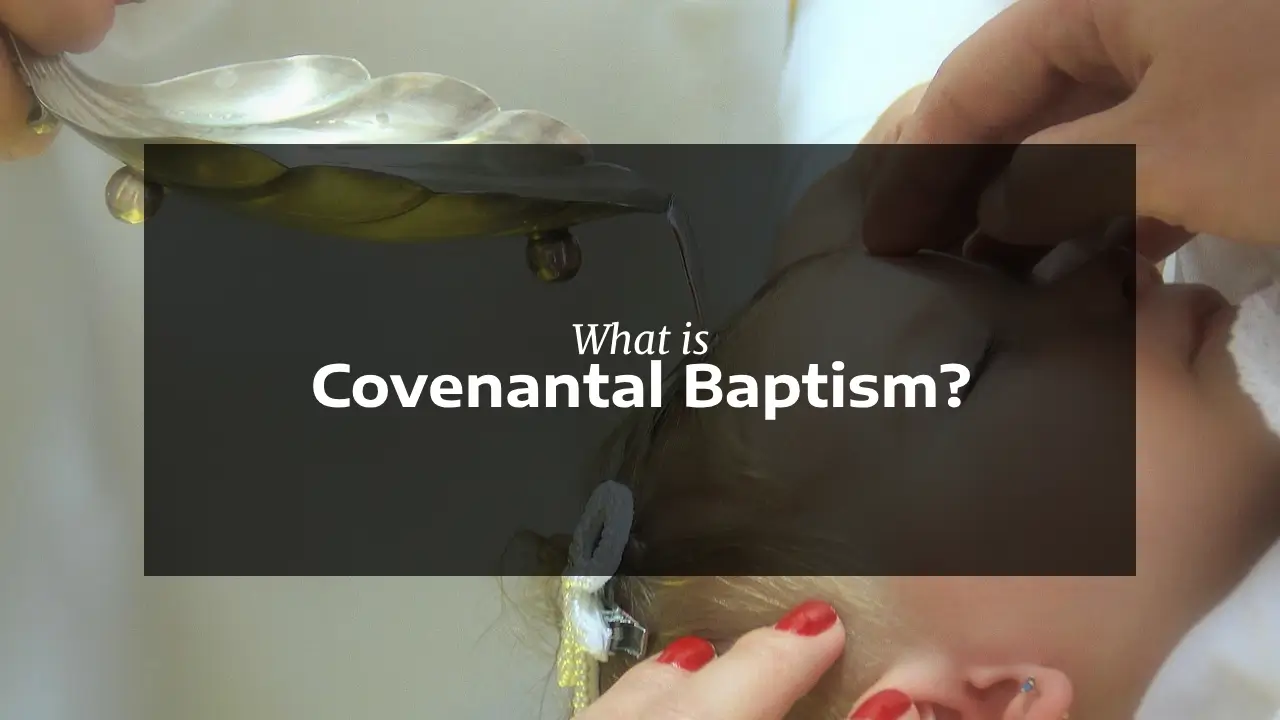Covenantal Baptism is a distinctive theological perspective primarily associated with Reformed and Presbyterian traditions within Protestant Christianity. This doctrine views baptism as a sign and seal of God’s covenant of grace, a divine promise that extends across generations, binding believers and their families to God. Administered to infants of believing parents, Covenantal Baptism parallels the Old Testament practice of circumcision, marking the inclusion of children in the covenant community. It embodies God’s initiative in establishing a relationship with His people, with the expectation that baptized children will grow into personal faith within the nurturing environment of the church and family, reflecting the communal and intergenerational nature of God’s redemptive plan.
Theological Foundations
The theology of Covenantal Baptism is deeply rooted in the concept of the covenant of grace, which understands God’s relationship with humanity as a continuous promise of salvation that spans from the Old Testament to the New. In this framework, baptism replaces circumcision as the covenant sign, signifying that the children of believers are part of God’s covenant community, just as Israelite children were included through circumcision. This perspective emphasizes God’s sovereignty in salvation, affirming that He extends His promises to believers and their offspring. Unlike Baptismal Regeneration, which ties baptism directly to salvation, Covenantal Baptism focuses on the communal and familial aspects of faith, viewing baptism as a pledge of God’s faithfulness rather than an immediate conferral of salvation. Parents are entrusted with the responsibility of raising their children in the faith, fostering an environment where the seeds of baptismal grace can grow into personal commitment. This theology balances divine initiative with human responsibility, highlighting the church’s role as a covenant community that nurtures faith across generations, ensuring that God’s promises are passed down through families.
Scriptural Support
The scriptural basis for Covenantal Baptism is grounded in passages that emphasize the continuity of God’s covenant and the inclusion of children in His promises. In the Epistle to the Colossians, Paul describes believers as having been “circumcised with a circumcision made without hands” through baptism (Colossians 2:11-12), suggesting that baptism fulfills the role of circumcision in the new covenant. This connection underscores the idea that baptism, like circumcision, is a sign of covenant membership. The Acts of the Apostles further supports this view, with Peter proclaiming at Pentecost that God’s promise is “for you and for your children and for all who are far off” (Acts 2:39), indicating that the covenant extends to the offspring of believers. The covenant with Abraham in Genesis, where God establishes an everlasting covenant that includes children through circumcision (Genesis 17:7-14), serves as a foundational model for including infants in the new covenant through baptism. These passages collectively affirm that God’s covenantal promises encompass families, providing a scriptural rationale for baptizing the children of believers as a sign of their place in the covenant community.
Early Church Father References
While the early church fathers did not explicitly articulate the covenantal theology later developed by Reformed theologians, their widespread practice of infant baptism provides historical precedent for Covenantal Baptism. Origen, a third-century theologian, noted that the church’s practice of baptizing infants was a tradition received from the apostles (Commentary on Romans, 5.9), suggesting an early acceptance of including children in the Christian community. Augustine, a fourth- and fifth-century bishop, also supported infant baptism, though his emphasis was often on addressing original sin (On Baptism, Against the Donatists, 4). His practice of baptizing infants reflects an understanding that children of believers were part of the church, aligning with the later covenantal framework. Although the early fathers did not use the language of covenant theology, their endorsement of infant baptism as a normative practice laid the groundwork for Reformed theologians to develop the doctrine of Covenantal Baptism, emphasizing God’s promises to families within the church.
Conclusion
Covenantal Baptism embodies a theological vision of God’s lasting covenant, marking infants as part of the church with the hope that they will grow into personal faith. Rooted in scriptural passages such as Colossians 2:11-12, Acts 2:39, and Genesis 17:7-14, and supported by the early church’s practice of infant baptism as seen in Origen and Augustine, this doctrine underscores the communal and familial dimensions of Christian faith. It reflects a profound trust in God’s faithfulness to His covenant people, balancing divine initiative with the call to nurture faith within the church. Covenantal Baptism continues to shape Reformed and Presbyterian worship, affirming the sacred role of families in God’s redemptive plan.






